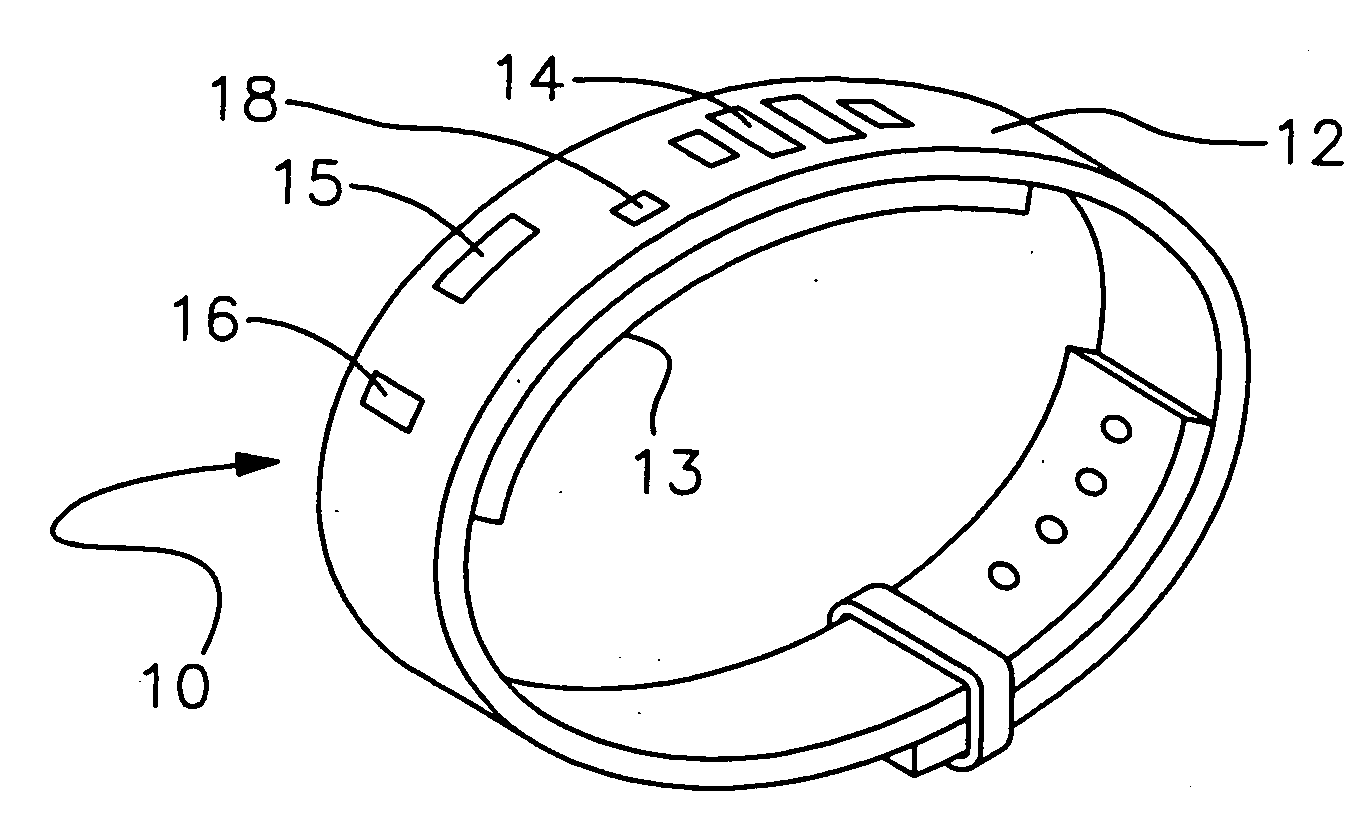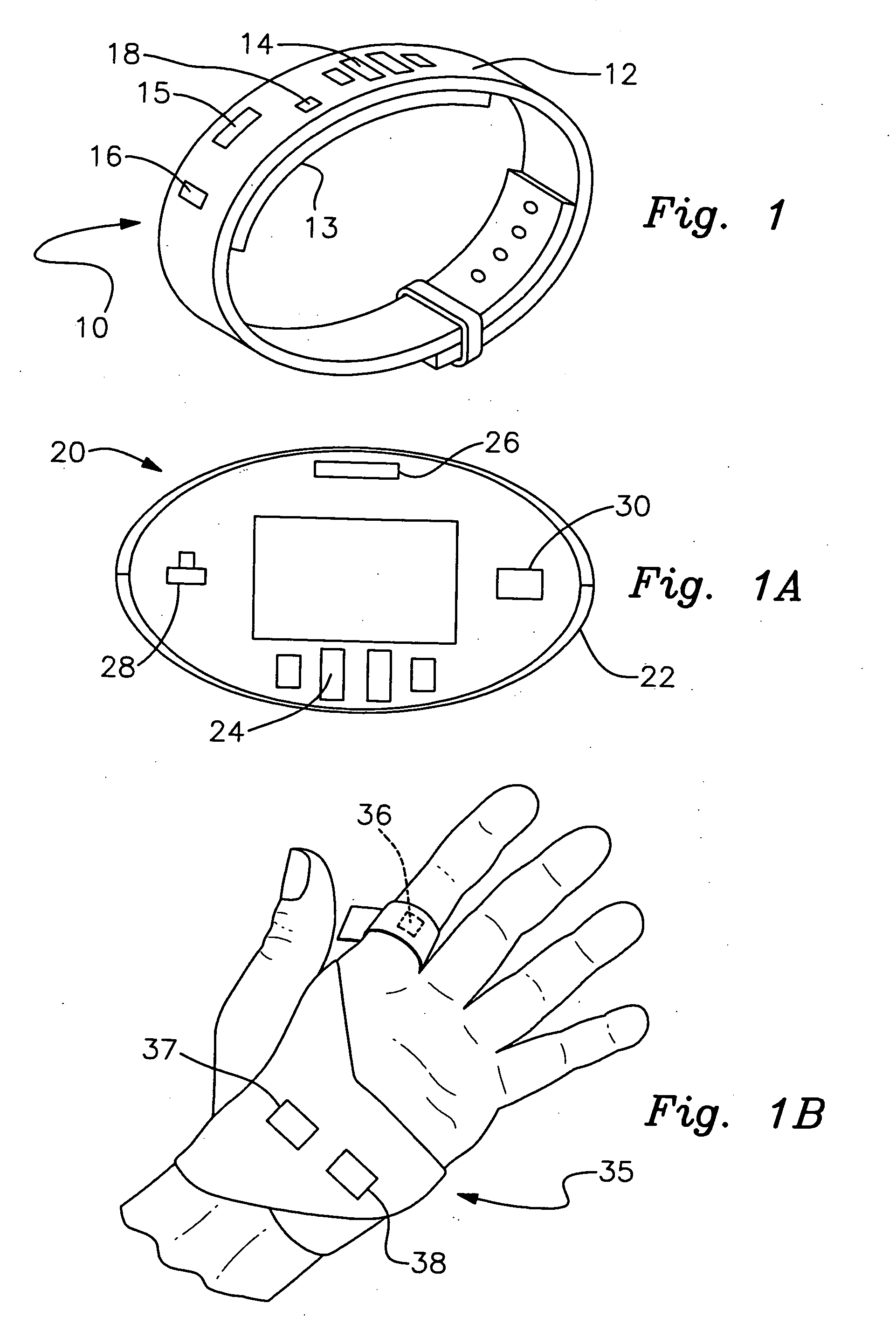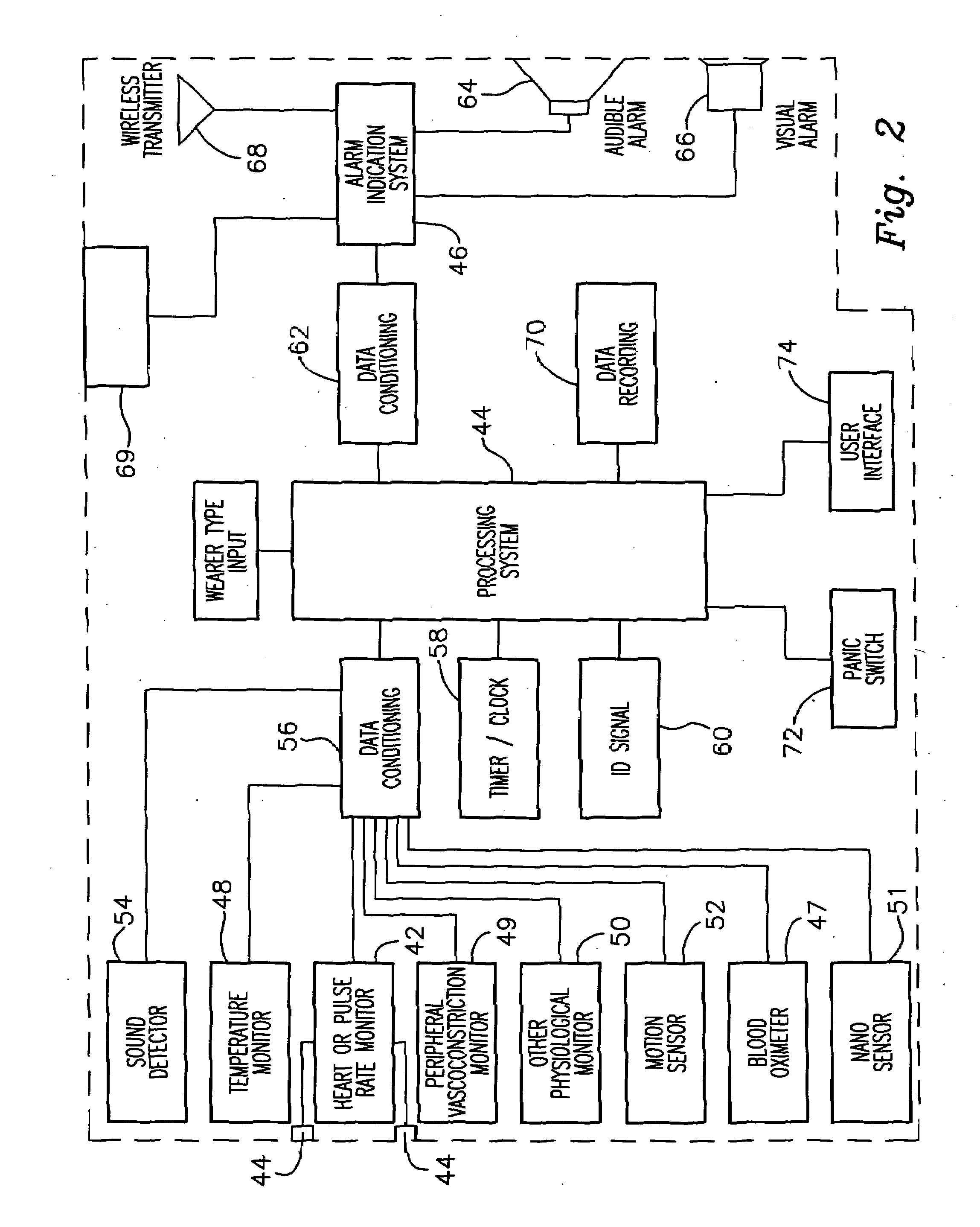Personal emergency condition detection and safety systems and methods
a technology for emergency situations and safety systems, applied in the field of personal safety systems and methods, can solve the problems of expensive and/or ineffectiveness, drowning still occur each year, and accidents, and achieve the effects of convenient emergency response or rescue activities, convenient wear by a person, and convenient us
- Summary
- Abstract
- Description
- Claims
- Application Information
AI Technical Summary
Benefits of technology
Problems solved by technology
Method used
Image
Examples
Embodiment Construction
[0020]To provide a system and method for detecting and indicating a possible drowning or asphyxia victim, an example of a wearable article or device 10, worn by a swimmer, is shown in FIG. 1. The device 10 may be a wearable device, which is designed to monitor one or more physiological conditions of the wearer. As shown in this example, the device 10 may be a wrist worn device, but other wearable articles are contemplated, such as a patch type device, chest strap type of device, arm, ankle or leg strap type device, ear lobe clip, fingertip clip, ring device, or any other suitable wearable device which can be positioned to monitor the one or more physiological conditions of the wearer. Depending on the physiological function being monitored, the wearable device characteristics may be adapted for effectively monitoring such functions. In this example, the physiological function monitored is the heart rate or pulse rate characteristics of the wearer. The monitoring of the heart rate or...
PUM
 Login to View More
Login to View More Abstract
Description
Claims
Application Information
 Login to View More
Login to View More - R&D
- Intellectual Property
- Life Sciences
- Materials
- Tech Scout
- Unparalleled Data Quality
- Higher Quality Content
- 60% Fewer Hallucinations
Browse by: Latest US Patents, China's latest patents, Technical Efficacy Thesaurus, Application Domain, Technology Topic, Popular Technical Reports.
© 2025 PatSnap. All rights reserved.Legal|Privacy policy|Modern Slavery Act Transparency Statement|Sitemap|About US| Contact US: help@patsnap.com



